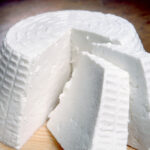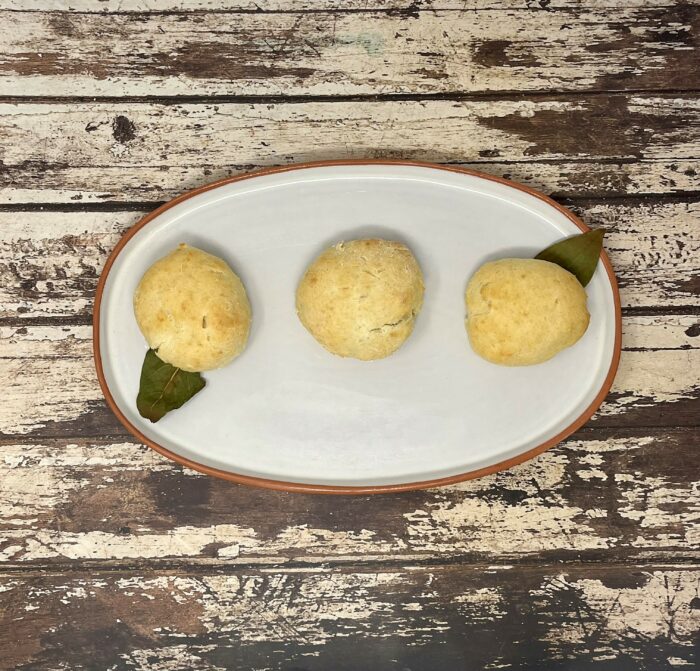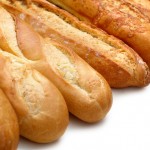Libum is a sweet bread made from ricotta cheese, which is baked and sweetened with honey. This was eaten by the Romans as breakfast or a snack.
These are simple to make and an easy way to get your child into the kitchen. Make them alongside other dishes for a Roman feast!
Skills Check
Follow a recipe; follow food safety & hygiene rules; tidy away; use measuring spoons; chop using bridge/claw technique safely; use a toaster/grill (with adult supervision).
Equipment
Bowl, spoon, measuring spoons/cups, baking paper, baking tray, oven gloves, fork
Allergens
(Please note the allergens listed are indicative only. Allergens vary depending on brand; check the labels on the products you use)
Gluten | Eggs | Milk
Ingredients (serves 4, or 8 as a taster):
- 250g Ricotta cheese
- 120g (1 cup) Plain flour
- 1 Beaten egg
- 4 Dried bay leaves
- 2 tsp Honey
Method
- Preheat the oven to 190°C or 375°F
- Sift the flour in a mixing bowl.
- Beat the cheese until soft, stir into the flour.
- Add the beaten egg to the flour/cheese mixture, forming a soft dough
- Divide the dough into four and shape each piece into a bun
- Place on a greased baking tray with bay leaves underneath.
- Bake for 35 - 40 minutes until golden brown.
- Pour onto a flat plate, remove the bay leaves, and place the hot buns in the honey and rest untill the honey is absorbed.
So thinking about Libum Roman Bread ...

Ricotta Cheese is an excellent source of protein and calcium. Choose reduced fat varieties where possible.
Nutritional Information
| - | Energy | 991kJ / 236kcal | 12% |
| Med | Fat | 8.7g | 12% |
| Med | Saturates | 4.8g | 24% |
| Low | Sugars | 4.1g | 5% |
| Low | Salt | 0.21g | 4% |
per 113g serving
% of an adult's reference intake
Typical values per 100g: Energy 881kJ / 210kcal
Notes
A traffic light system is used on nutrition labels to make it easier to see which foods and drinks are lower in calories, fat, sugar and salt. Try and choose more ‘greens’ and ‘ambers’ and fewer ‘reds’, and stick to smaller portions of ‘reds’.
Just because a recipe or a food has a red traffic light doesn’t mean you shouldn’t eat it. Understanding why a food or recipe might have a red light can be helpful. For example oily fish is high in total fat and so any recipe containing oily fish is likely to be ‘red’ for fat. But it is recommended that we eat oily fish at least once a week because the type of fat it contains is beneficial for our health.
% Reference Intakes are also shown. Reference Intakes are guidelines about the approximate amount of particular nutrients and energy required for a healthy diet (based on an average-sized woman doing an average amount of physical activity). Most children will require less than these Reference Intakes. The contribution of one serving of a food or drink to the Reference Intake for each nutrient is expressed as a percentage.




